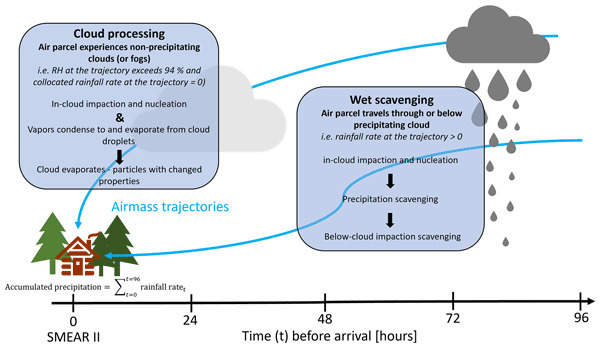PHYSICS
University of Eastern Finland sheds light on the effect of rain, clouds on atmospheric aerosols
Published in Atmospheric Chemistry and Physics, a new study by an international team of researchers explores the effect of precipitation and clouds on particle concentrations during their transport to a measurement location. 
Wet processes in the atmosphere, such as clouds and precipitation, have a strong impact on the concentrations and chemical composition of atmospheric aerosols. New findings from the study show that when air masses travel to the SMEAR II research station located in a rural boreal forest site in Finland in northern Europe, the concentrations of chemical species contained in the particles (such as sulfate, black carbon, and organics) significantly decrease upon a precipitation event, i.e., rain. The derived removal rate of sulfate from the atmosphere was dependent on the season, whereas organics and black carbon were reduced more evenly, regardless of the season. The researchers also observed that a significant amount of sulfate mass is formed in non-precipitating clouds, and they could determine the particle size to which the sulfate formed is distributed.
The researchers utilized long time series of aerosol concentrations measured in the SMEAR II research station, and air mass trajectories arriving at the measurement station, calculated from the HYSPLIT trajectory model.
The results can, among other things, improve the ability of climate models to estimate the transport of aerosols to different areas, and thus better estimate the number of aerosols on the planet. Current climate models have major inaccuracies, especially in the transport of aerosols to the Arctic region. This is reflected as uncertainty in climate models when assessing the impact of aerosols on the Arctic climate, which is particularly susceptible to the effects of climate change.
